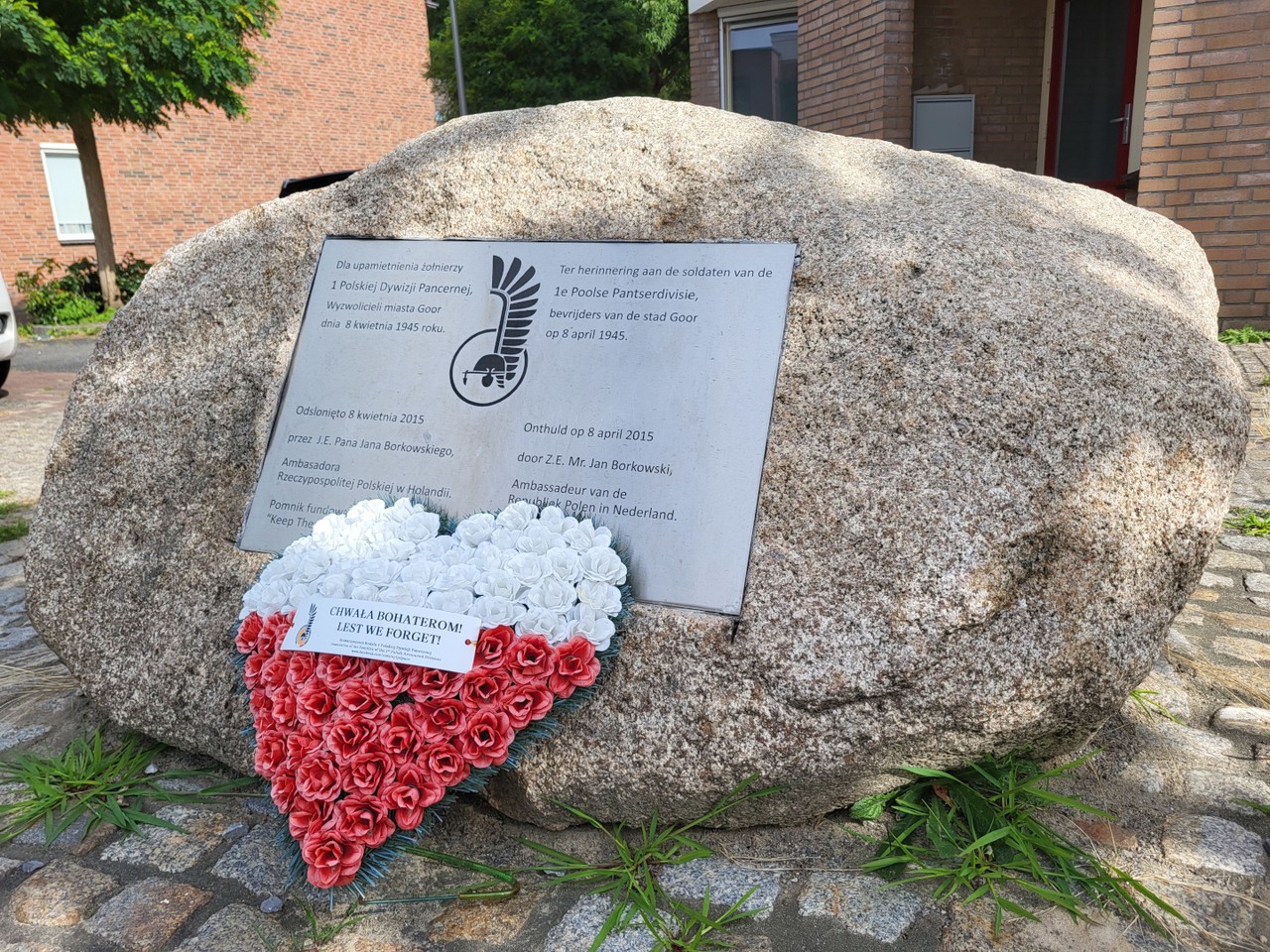The 80 cluster bombs dropped by the U.S. Air Force’s 397th Bombardment Group were aimed at Goor due to its strategic location at a crossroads. The bombing also hit a munitions depot, which exploded, causing numerous injuries and fatalities. As a result, the liberation of Goor a week later was a mix of joy and sorrow.
The 1st Polish Armoured Division had been founded in 1942 in Scotland and was made up of soldiers who had fled their homeland three years earlier after the Nazi invasion. In late 1944, 16,000 of these Poles crossed over to Normandy, where they were incorporated into the Canadian Army. They played a crucial, though often tragic, role in several phases of the war. They liberated parts of Zeeland in September 1944 and suffered heavy losses during the Battle of Arnhem (Operation Market Garden) that same month.
In the spring of 1945, they entered the Netherlands from Germany and helped liberate the eastern and northern parts of the country. The Polish liberators eventually ended up in northern Germany, where they remained until 1947, carrying out occupation duties on behalf of the Allied forces.
Returning to Poland was no longer an option for most of them, as their homeland had fallen under Soviet influence. Many Poles decided to build a new life in the Netherlands. Dutch businesses, desperate for workers, welcomed them—machine factory Stork in Hengelo, for example, employed several Poles.
These men later married local women, started families, and tried to move on from the war. But forgetting was not easy. Many struggled with trauma due to the horrors they had endured. On top of that, the communist regime in Poland had stripped them of their nationality. It would be years before they were granted Dutch citizenship, leaving them stateless for a long time.
To make matters worse, the Polish contribution to the liberation of the eastern Netherlands was ignored for decades. At the annual remembrance ceremonies in Goor, no mention was made of the Poles. That finally changed in 1995, when Bernard Klaczynski from Hengelo was invited to attend for the first time. A tree was planted at the war memorial that day, in gratitude for the Polish liberators.
Twenty years later, in 2015, the Polish ambassador visited Goor to unveil a memorial stone in the town center in honor of the 1st Polish Armoured Division.
